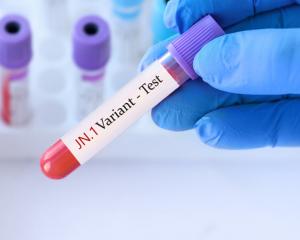
Yesterday, the company posted normalised net profit after tax of $293million for the six months to January 31, up from $72million the previous year. Normalised earnings before interest and tax were $584million, up from $312million.
In a statement, chief executive Miles Hurrell said it was ‘‘now a very different co-op to this time last year’’.
He was pleased with the progress Fonterra had made in the first six months of the financial year, but said it was now operating in a very different global context as a result of Covid-19.
For the second half of the financial year, Mr Hurrell reaffirmed the forecast farmgate milk price range of $7-$7.60 per kg ms and forecast normalised earnings guidance of 15c-25c per share.
‘‘Our underlying earnings are tracking well at the half year but there is no doubt that we have a number of risks that are outside our control in the second half — in particular, the potential impact of Covid-19 on global demand, geopolitical risks in key markets such as Hong Kong and Chile, and ongoing dry weather conditions here in New Zealand which could impact collections and potentially input costs,’’ he said.
The company’s foodservice business had been its ‘‘standout performer’’ in the first half as it had grown sales across China and Asia, while net debt had been reduced by 22% or $1.6billion, since this time last year.
It was continuously reviewing its asset portfolio and strategic reviews had been completed on China Farms and its Dairy Partners Americas (DPA) Brazil joint venture; sales processes for both were under way.
Meanwhile, ASB senior rural economist Nathan Penny said the New Zealand dairy — and broader food — sector was better placed than many others to manage the fallout from Covid-19.
Global dairy prices had fallen on the back of the outbreak but the lower NZD/USD meant the outlook for farmgate milk prices was healthy. At current forecast milk price levels, the majority of farmers were likely to remain profitable, Mr Penny said.
Fonterra was reporting early signs of turning its performance around and, while it was still ‘‘early days’’, the results announced yesterday were an encouraging start, he said.
Dairy auction prices fell for the fourth consecutive auction this week; key whole milk powder prices dipped 4.2% and overall prices fell 3.9%.
Westpac market strategist Imre Speizer said it was a stronger result than had been expected, given how other markets were reacting to Covid-19.
This week’s auction was expected to be the first to be significantly affected by the outbreak, as global containment measures had accelerated in early March. However, the 3.9% fall was of a similar magnitude to the three previous auction falls.
North Asian demand — a proxy for Chinese demand — bounced back from a weaker showing at the previous auction.
That was consistent with data showing new virus cases inside China had slowed significantly, and anecdotes of economic activity in China starting to normalise.
While demand for dairy products had been more robust than for other commodities, it was likely to remain affected by the economic fallout from the pandemic for some time.










